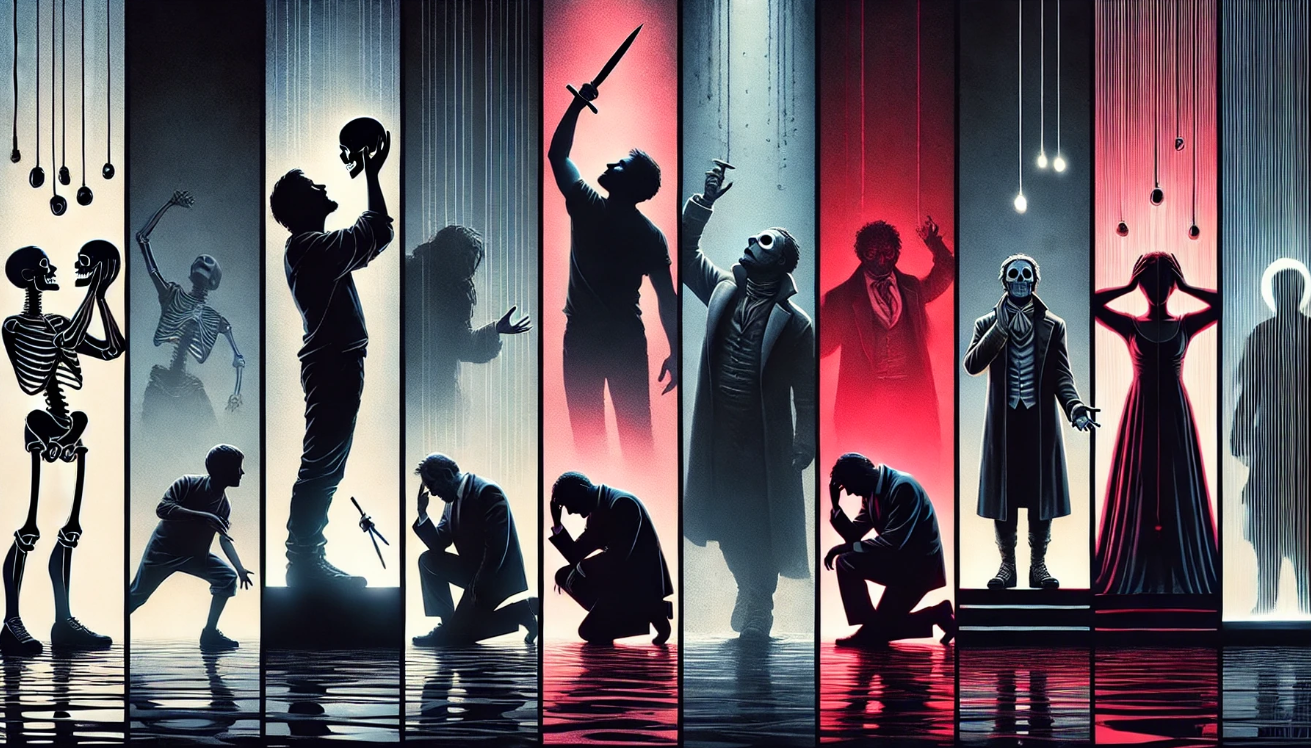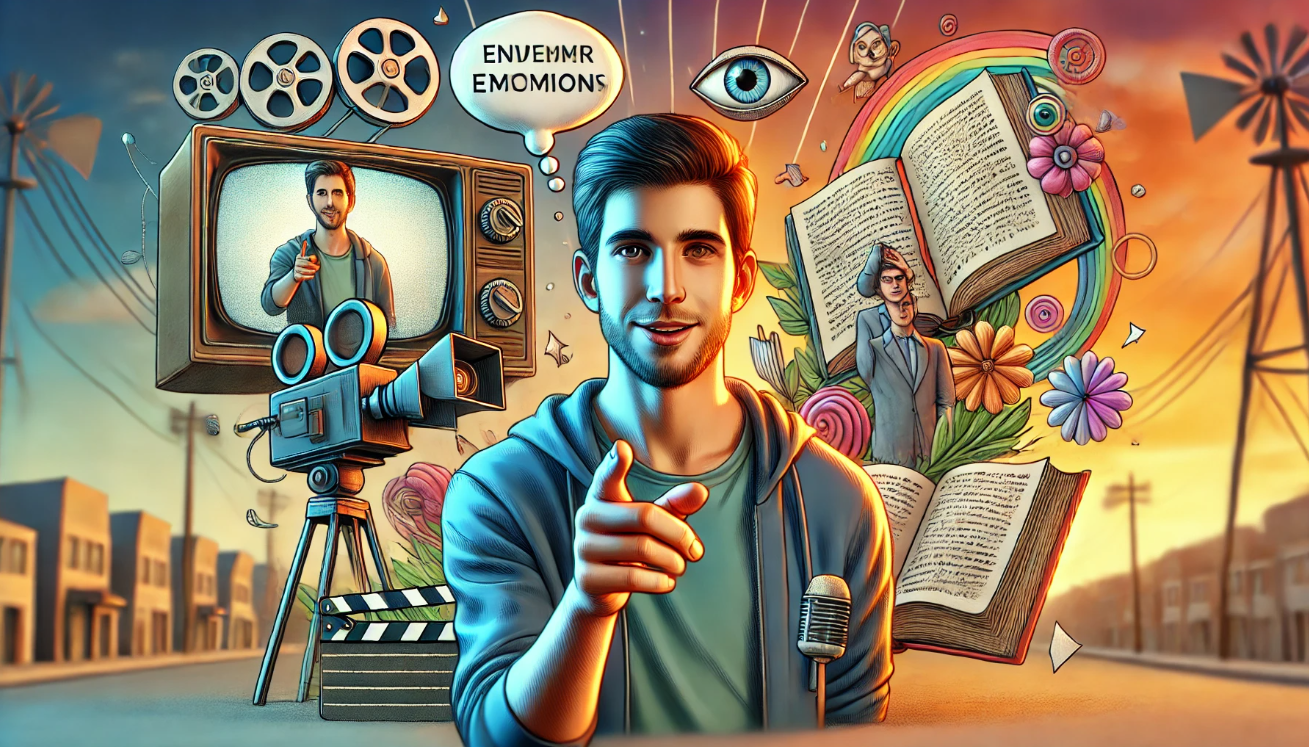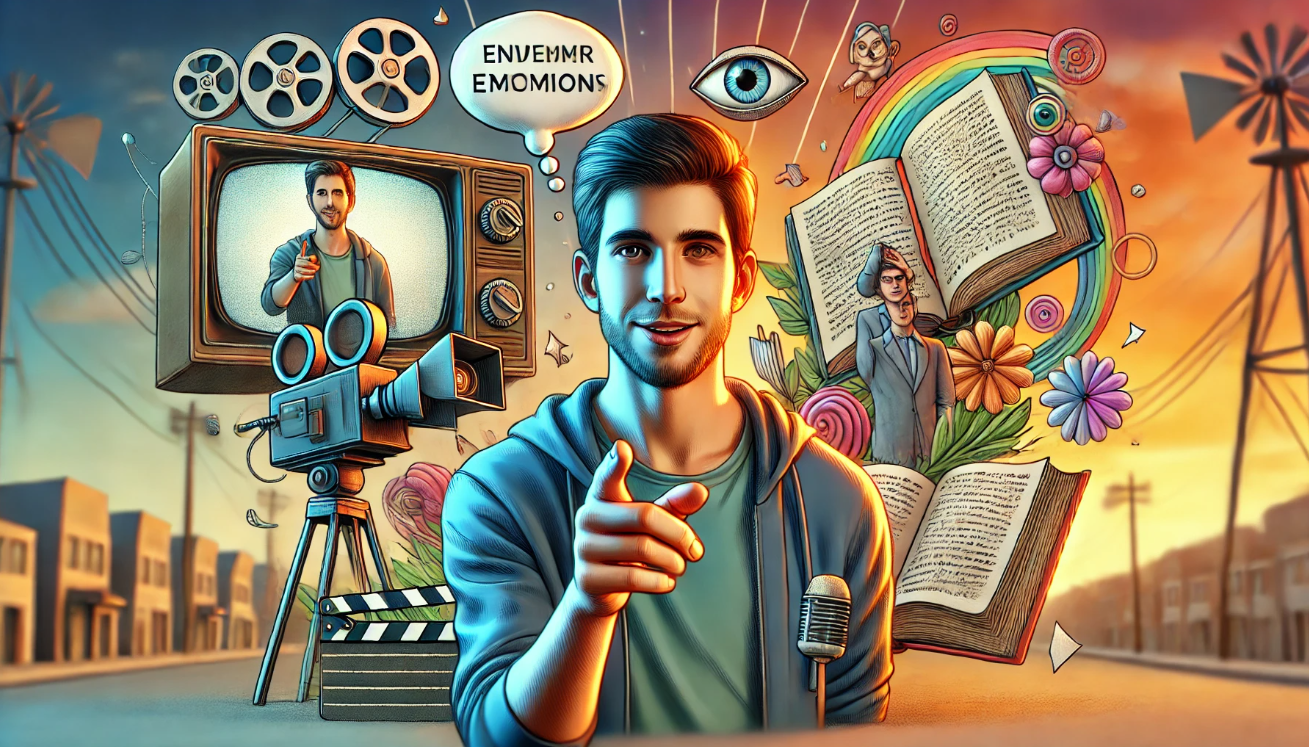
Soliloquies and Their Contribution to Thematic Development in Literature and Drama.
Why do characters talk to themselves on stage—and why does it matter? 🎭 Whether you’re reading Hamlet or watching a modern drama, soliloquies often hold the key to a story’s deepest truths. Yet many readers skip over them or miss their true purpose. Here’s the thing: soliloquies and their contribution to thematic development can transform how we understand characters, conflicts, and meaning in literature. If you’ve ever struggled to connect a character’s inner voice to the bigger picture, this guide is for you. Let’s unlock the power of soliloquies—and reveal how they quietly shape the themes that move us.
Table of Contents
Toggle1. Why Soliloquies Still Matter 🎭

In a world filled with fast-paced dialogue and action-packed scenes, soliloquies might seem like outdated relics of classic drama. But here’s the truth: soliloquies are still one of the most powerful storytelling tools in literature and theater—and they’re more relevant than ever.
A soliloquy allows us to hear what a character really thinks and feels, without filters or performance. It’s an intimate moment where the mask drops, revealing internal struggles, fears, hopes, or contradictions. These insights don’t just develop the character—they often drive the story’s deeper themes.
Think about Hamlet’s famous “To be or not to be” speech. It’s not just a poetic monologue—it lays bare his existential crisis, anchoring the play’s theme of life, death, and uncertainty. Without that soliloquy, the audience might never fully grasp the weight of his internal conflict.
Today, soliloquy-like techniques still show up in novels, films, and even TV shows. Whether it’s a voiceover in a movie or a character breaking the fourth wall on screen, these moments give us direct access to the character’s inner world—and help us connect emotionally with the themes being explored.
✅ Practical Insight: If you’re trying to analyze or write a story, pay close attention to these “private” moments. They often reveal a character’s motivation, highlight the theme, or create tension that pays off later.
So yes—soliloquies still matter. They quietly shape the stories we love, helping us understand not just the characters, but ourselves. 💬
2. What Is a Soliloquy? A Simple Definition 🗣️

A soliloquy is a speech in a play or piece of literature where a character speaks their thoughts out loud, usually alone on stage, directly to the audience. It’s like a window into the character’s mind—raw, honest, and unfiltered.
Unlike dialogue, which involves other characters, or a monologue, which might be addressed to a group, a soliloquy is private and personal. The character isn’t trying to persuade anyone—they’re thinking aloud, allowing us to hear what’s going on beneath the surface.
🔍 Key Features of a Soliloquy:
- Spoken alone or as if alone
- Reveals inner thoughts, emotions, and dilemmas
- Often explores conflict, motivation, or moral struggle
- Drives theme development and emotional depth
3. Thematic Development: What It Means and Why It Matters 🌱

Before we dive into how soliloquies shape a story, let’s break down what thematic development actually means—and why it’s so important.
A theme is the central idea or message in a story. It’s not just what happens in the plot, but what the story is really about. Themes can be big ideas like love, power, betrayal, identity, or freedom.
Thematic development is the way that idea grows, deepens, and becomes clearer as the story unfolds. It’s how the writer takes a theme from a simple idea and turns it into something meaningful, emotional, and thought-provoking.
🎯 Why it matters:
- Helps readers connect emotionally with the story
- Adds depth and purpose beyond just the plot
- Makes characters and conflicts feel real and relatable
- Leaves the audience with something to reflect on
📌 Real-World Example:
In Macbeth, the theme of ambition is introduced early, but it’s through Macbeth’s soliloquies that we see how his ambition twists into guilt, fear, and madness. The theme doesn’t stay static—it develops through his inner thoughts.
✅ Practical Tip:
When analyzing a story, ask yourself:
- What big idea keeps coming up?
- How do characters’ choices and emotions shape that idea?
- Do soliloquies give us insight into that theme?
Understanding thematic development helps you go beyond surface-level reading. You start seeing how and why a story leaves a lasting impact—and that’s the key to stronger essays, better writing, and deeper appreciation of literature. 📖✨
4. How Soliloquies Drive Thematic Development 🧠➡️🎭

Soliloquies do more than just fill time on stage—they’re essential for showing how themes take shape in a story. When a character speaks their thoughts aloud, we get a direct look at the why behind their actions. And that’s where thematic development really comes to life.
Here’s how soliloquies move themes forward in powerful, practical ways:
✅ 1. Revealing Internal Conflict
Characters often wrestle with big moral or emotional dilemmas in soliloquies. This inner conflict mirrors the story’s central theme and helps the audience understand what’s at stake.
📌 Example:
In Hamlet’s “To be or not to be” soliloquy, he debates life and death—fueling the play’s theme of existential uncertainty.
✅ 2. Exposing True Motives and Desires
Soliloquies strip away the mask. Characters say what they really want, even if it contradicts their public behavior. These hidden motives often drive themes like ambition, guilt, or betrayal.
📌 Example:
In Macbeth, the title character’s soliloquies reveal how his unchecked ambition leads to his downfall—one of the play’s key themes.
✅ 3. Foreshadowing and Building Tension
Soliloquies often hint at what’s to come. When a character reveals fear, doubt, or intent, it builds dramatic tension and deepens themes like fate, free will, or justice.
📌 Example:
In Doctor Faustus, Faustus’ speeches show his growing regret, tying directly to the theme of damnation and the cost of knowledge.
✅ 4. Inviting the Audience to Reflect
Because soliloquies feel so personal, they often make the audience reflect on universal human experiences. This emotional connection makes the theme resonate long after the story ends.
🎯 Actionable Tip:
When you come across a soliloquy, ask:
- What theme is being explored here?
- Does this moment show change, conflict, or growth?
- How does it affect the story’s message?
Soliloquies aren’t just artistic flourishes—they’re theme engines. They reveal what a character won’t admit to others and show how the story’s big ideas evolve in real time. That’s what makes them so powerful—for both writers and readers alike. 💬✨
5. Real-Life Application: How Understanding Soliloquies Helps Students, Writers, and Performers 🎯

Soliloquies aren’t just for actors on stage—they’re powerful tools that can help students, writers, and performers in real-world settings. Once you understand how soliloquies contribute to thematic development, you can use that knowledge to improve your analysis, storytelling, or performance.
🎓 For Students: Sharper Literary Analysis
If you’re studying literature, soliloquies are goldmines for essay content. They often reveal the theme, emotional turning points, and character motivations in one focused moment.
✅ Pro Tip:
In your next literature assignment, quote a soliloquy and explain how it reveals a key theme. It shows deeper understanding—and can boost your grade!
✍️ For Writers: Stronger Character Development
Writers can learn a lot from how soliloquies work. These speeches show how to dig into a character’s inner world without info-dumping. They demonstrate how internal conflict can drive a plot and reinforce a theme.
✅ Action Step:
Write a short soliloquy for one of your characters. Ask:
- What are they afraid to say out loud?
- How does this fear connect to the story’s main theme?
🎭 For Performers: Deeper Emotional Connection
Actors use soliloquies to unlock their character’s core emotions. Understanding the theme behind a speech helps deliver it with more authenticity and depth.
✅ Practical Tip:
Before performing a soliloquy, identify the theme it explores. Is it love, power, regret? Let that idea guide your tone, pacing, and gestures.
Soliloquies might seem like old-fashioned drama tricks, but they’re actually powerful, flexible tools. Whether you’re breaking down a Shakespearean speech or writing a modern screenplay, knowing how soliloquies work—and how they develop themes—gives you a creative and analytical edge. 💡📘
6. Case Studies: Iconic Soliloquies and Their Themes 🎭📚

One of the best ways to understand how soliloquies contribute to thematic development is to look at powerful examples in action. Below are some of the most iconic soliloquies in literature and drama—each one tied directly to a key theme that shapes the entire story.
🧠 Hamlet by William Shakespeare
Soliloquy: “To be or not to be…”
Theme: Existential doubt, mortality, and inner conflict
In this famous soliloquy, Hamlet questions the value of life itself. His words explore the fear of the unknown, revealing the central theme of existential uncertainty. Without this moment, the audience wouldn’t fully grasp the weight of his internal struggle.
✅ Takeaway: Soliloquies can turn philosophical questions into emotional turning points.
👑 Macbeth by William Shakespeare
Soliloquy: “Is this a dagger which I see before me…”
Theme: Ambition, temptation, and moral decay
Here, Macbeth wrestles with his desire for power versus his fear of consequences. The soliloquy exposes the theme of ambition turned destructive, making it a key moment in his downfall.
✅ Takeaway: A character’s private thoughts can show how a theme evolves from desire to destruction.
🔥 Doctor Faustus by Christopher Marlowe
Soliloquy: Final speech before damnation
Theme: The cost of knowledge and the fear of eternal punishment
Faustus realizes too late the price of his choices. His desperate soliloquy reveals deep regret and the theme of spiritual conflict and redemption lost.
✅ Takeaway: Soliloquies often show the emotional climax of a theme—when it’s too late to turn back.
🏠 Death of a Salesman by Arthur Miller
Soliloquy-like scene: Willy Loman’s monologues and flashbacks
Theme: The American Dream and self-deception
Willy speaks to himself and imagined figures, exposing his internalized belief in a broken dream. These speeches highlight the theme of illusion vs. reality, showing how self-delusion can destroy a life.
✅ Takeaway: Even modern soliloquies—through memory or voice—can reveal timeless themes.
These case studies show how soliloquies do more than fill silence. They build emotional depth, reveal conflict, and most importantly, bring themes to life. Whether you’re studying literature or creating your own, analyzing soliloquies gives you direct insight into the why behind every great story. ✨📖
7. Modern Uses: Soliloquies in Contemporary Drama and Film 🎬🗣️

Think soliloquies are just for Shakespeare? Think again. Today’s writers and filmmakers still use soliloquy-like techniques to reveal character depth, build tension, and explore complex themes—just in more modern forms.
Here’s how soliloquies are alive and well in today’s storytelling 👇
🎤 Voiceovers in Film and TV
In many movies and series, characters speak directly to the audience through voiceover narration. This is the modern equivalent of a soliloquy—it lets us inside their mind.
📌 Example:
In Dexter, the main character’s voiceovers expose his hidden identity and moral struggles, developing themes of duality and justice vs. instinct.
📹 Breaking the Fourth Wall
Some characters actually speak directly to the audience, acknowledging we’re watching. This technique creates intimacy while exploring internal conflict or social commentary.
📌 Example:
In Fleabag, the main character often pauses to talk to the camera, revealing her guilt, grief, and emotional isolation. These moments drive the show’s themes of shame, vulnerability, and human connection.
📖 Journals, Letters, and Internal Monologue in Books
In contemporary literature, writers often use diary entries, letters, or stream-of-consciousness thoughts to give characters a voice. These serve the same purpose as soliloquies—to expose raw emotions and evolving themes.
📌 Example:
In The Perks of Being a Wallflower, Charlie’s letters act as soliloquies, exploring themes of trauma, growth, and belonging.
✅ Why It Matters
Even without a spotlight or a stage, modern soliloquies:
- Let audiences connect deeply with characters
- Reveal themes in a personal, emotional way
- Highlight the gap between what’s said and what’s truly felt
🎯 Actionable Tip:
Next time you watch a film or read a novel, look for “soliloquy moments.” Ask:
- What is the character revealing?
- How does it connect to a bigger theme?
Soliloquies may have evolved in form, but their function remains timeless. Whether spoken to a crowd or whispered in a voiceover, they continue to help us understand characters—and the human experience—on a deeper level. 💬✨
 Soliloquies have stood the test of time—for good reason. Whether it’s Hamlet in a dimly lit castle or a modern-day character breaking the fourth wall on Netflix, soliloquies continue to be one of the most powerful storytelling tools in literature, drama, and film.
Soliloquies have stood the test of time—for good reason. Whether it’s Hamlet in a dimly lit castle or a modern-day character breaking the fourth wall on Netflix, soliloquies continue to be one of the most powerful storytelling tools in literature, drama, and film.
They allow audiences to step inside a character’s mind, offering raw emotion, hidden motives, and moral dilemmas that can’t always be shown through action or dialogue alone. This emotional access not only enriches the character but also amplifies the story’s themes, helping writers explore big ideas like identity, guilt, power, love, or redemption in a personal, relatable way.
In today’s fast-paced, content-saturated world, what makes a story stand out isn’t just what happens—it’s how deeply we connect with the people living it. Soliloquies bridge that gap.
Frequently Asked Questions (FAQs)
1. What is a soliloquy in literature and drama?
A soliloquy is a speech where a character speaks their thoughts out loud, often when alone on stage. It gives the audience direct access to the character’s inner feelings, motives, and conflicts.
2. How do soliloquies help develop themes in a story?
Soliloquies reveal a character’s personal struggles and moral dilemmas, which often tie directly to the main themes of the play or novel. They allow writers to explore complex ideas like power, guilt, love, or identity in a deeply emotional way.
3. What is the difference between a soliloquy, monologue, and aside?
A soliloquy is a character talking to themselves, revealing private thoughts. A monologue is a long speech to other characters. An aside is a short remark made to the audience that other characters can’t hear.
4. Why are soliloquies important in Shakespeare’s plays?
Shakespeare used soliloquies to let characters express their deepest emotions and thoughts directly to the audience. These moments often reveal key themes and turning points in the story, like Hamlet’s famous “To be or not to be” speech.
5. Do modern films and TV shows still use soliloquies?
Yes! Modern shows like Fleabag, House of Cards, and Better Call Saul use soliloquy-style moments—often by breaking the fourth wall—to reveal characters’ internal thoughts and emotions.
6. How can soliloquies make characters more relatable?
Soliloquies create intimacy by letting the audience hear what a character truly feels, even if they hide it from others. This honesty builds emotional connection and helps viewers understand their choices and struggles.
7. Can soliloquies be used in writing today?
Absolutely. Whether you’re writing a play, script, or novel, using internal monologue or direct speech to the reader can serve as a modern soliloquy. It’s a great way to reveal character depth and explore key themes.
8. What are some famous examples of soliloquies in literature?
Famous examples include Hamlet’s “To be or not to be,” Macbeth’s “Is this a dagger,” and Juliet’s “O Romeo, Romeo.” Each soliloquy highlights major emotional and thematic moments in the story.
